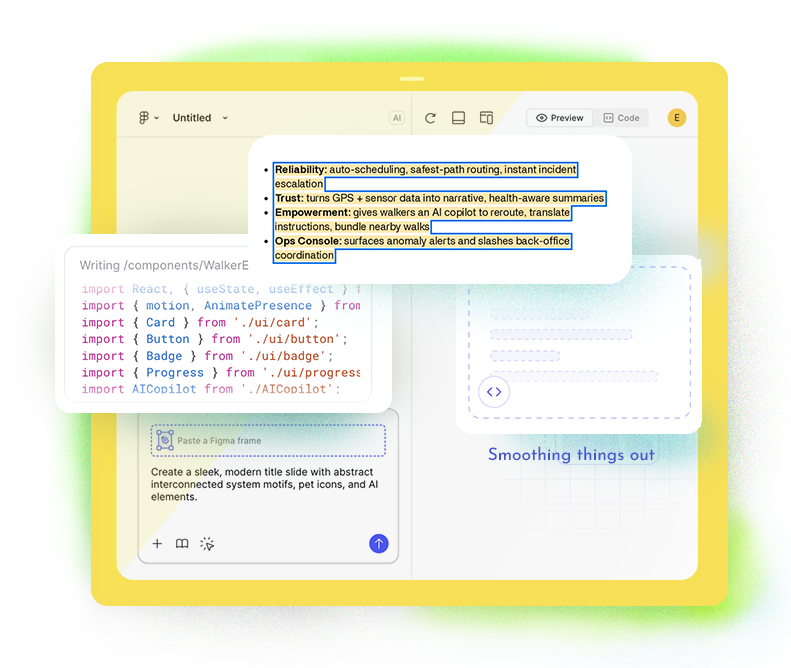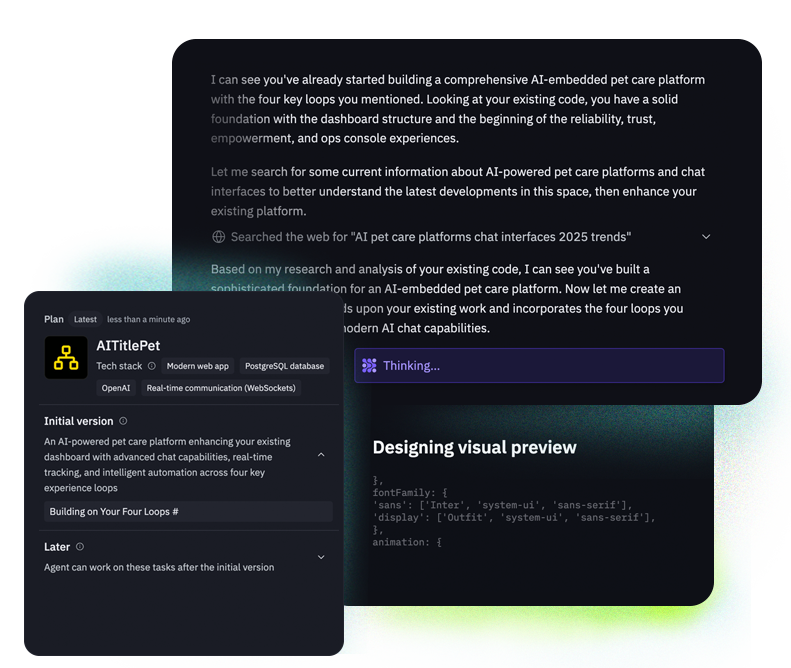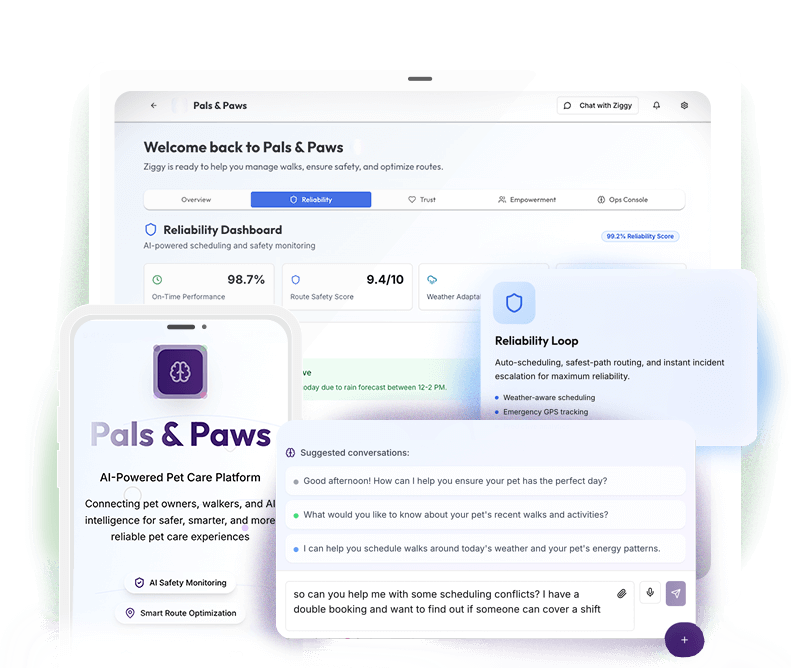BUILDING
MASTER ROUTES
Visibility & Planning - Pilot Program
Get Slider Revolution 200+ Templates 25+ Addons Object Library And Much More!/ 25 Days
Role & Skills
LLM creation, API database specialist
Tools
OpenAI agent, FigmaAI, Replit
Project Focus
AI-driven scheduling, safety, real-time interaction
Speed & Viability
Context & Mindset
In today’s digital pet landscape, priorities are transparency and reliability. This project emphasizes a mindset focused on speed, viability, and customer-centricity—leveraging tools like Replit, FigmaAI, and an embedded AI assistant “Ziggy” to quickly explore, test, and refine core features. The goal: create a practical, scalable solution that addresses immediate needs while maintaining flexibility for future growth.
Rapid Ideation
Just Vibing
Speed meets strategy:
This snapshot captures my approach to starting fast—no fuss, just prompt-driven exploration.
Here’s me first on Figma Make, opening up the platform, adding prompts like lets solve areas in “automation in pet scheduling” & a WHAT IF – “we can solve for real-time pet narratives,” and quickly moving from idea in my head to initial prototype.
It’s about embracing a go-getter mentality—being brave enough to try, test, and learn without overthinking. I believe that starting with an open mind and the right tools allows innovation to happen faster.

This exemplifies my process of framing core opportunities—reliably, trustworthily, and proactively—by quickly exploring potential solutions. I then translate these opportunities into clear system goals, demonstrating how I adapt, move swiftly, and align experimentation with strategic success metrics:
- Owner Retention: Target increased from 40% to 70% to boost trust.
- Incident Rate: Keep below 5% with safety alerts.
- Automation: Cut scheduling effort by 50%.
- Insights: Achieve 90% accuracy in pet summaries.
MVP Highlights
Opportunities & Designs
In the beginning, I focused on providing clarity to my model — anchoring into core requirements and setting a clear direction. I started by crafting targeted prompts to define the system’s fundamental needs, such as safety, reliability, and user engagement.

Early on, I understood how to structure prompts within the LLM and guide customer interactions with GPT within the app. I jumped seamlessly between Figma—sketching UI ideas—and Replit—building the active prototype—asking the model on the README first, then progressively developing a living, breathing application.
This iterative process allowed me to fine-tune actions, language, and workflows, ensuring each step aligned with the strategic goals. From quick sketches to functional prototypes, I demonstrated how to translate raw ideas into MVP features that impact retention, safety, and trust—all with minimal no-code prompts. This approach not only accelerates development but also showcases leadership in streamlining complex system design and customer engagement.

Lessons Learned
Wrap-Up & Path Forward
Throughout this exploration, the key insights reaffirm the value of simplicity, safety, and transparency—all essential for fostering long-term loyalty. The journey has shown how rapid prototyping and Vibe Coding enable quick validation and iterative refinement, turning experimental ideas into scalable solutions.
Looking ahead, I see immediate opportunities to enhance this platform further—leveraging more data sources and API integrations to create a richer, more contextual experience. For example, integrating health data APIs or GPS safety alerts could provide real-time insights that boost owner trust.
There’s also potential to broaden the user base by introducing new user models—like dog/ pet sitters—who could use the platform for different needs, expanding the ecosystem and creating more collaborative workflows.
While this iteration sails away, the next phase involves pilot testing, gathering user feedback, and continuously refining AI features. The goal remains clear: convert quick wins into sustainable, real-world solutions that are adaptable as the platform scales and evolves.


